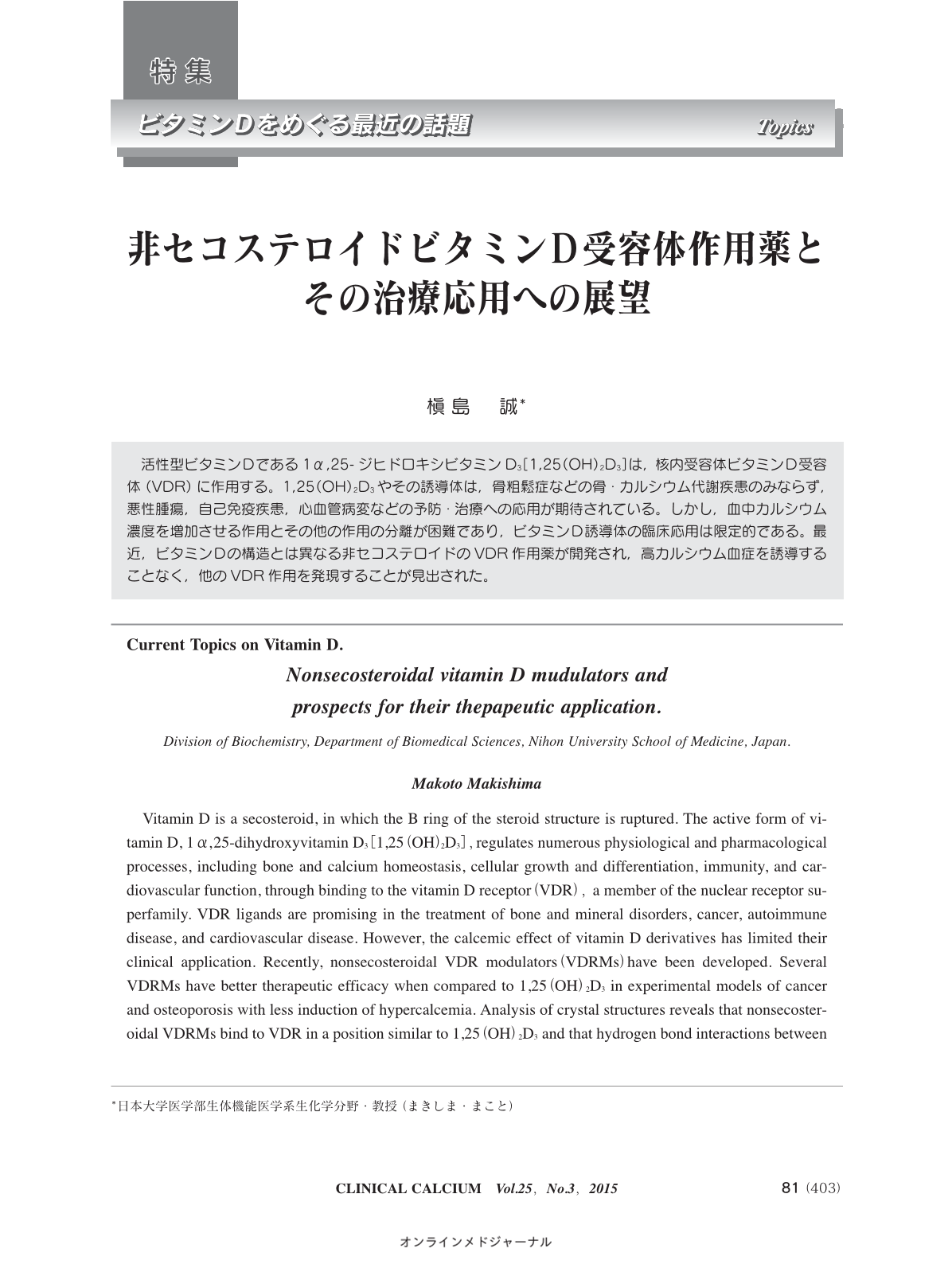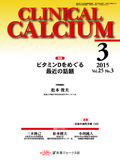Japanese
English
- 有料閲覧
- Abstract 文献概要
- 1ページ目 Look Inside
- 参考文献 Reference
活性型ビタミンDである1α,25-ジヒドロキシビタミンD3[1,25(OH)2D3]は,核内受容体ビタミンD受容体(VDR)に作用する。1,25(OH)2D3やその誘導体は,骨粗鬆症などの骨・カルシウム代謝疾患のみならず,悪性腫瘍,自己免疫疾患,心血管病変などの予防・治療への応用が期待されている。しかし,血中カルシウム濃度を増加させる作用とその他の作用の分離が困難であり,ビタミンD誘導体の臨床応用は限定的である。最近,ビタミンDの構造とは異なる非セコステロイドのVDR作用薬が開発され,高カルシウム血症を誘導することなく,他のVDR作用を発現することが見出された。
Vitamin D is a secosteroid, in which the B ring of the steroid structure is ruptured. The active form of vitamin D, 1α, 25-dihydroxyvitamin D3[1,25(OH)2D3],regulates numerous physiological and pharmacological processes, including bone and calcium homeostasis, cellular growth and differentiation, immunity, and cardiovascular function, through binding to the vitamin D receptor(VDR),a member of the nuclear receptor superfamily. VDR ligands are promising in the treatment of bone and mineral disorders, cancer, autoimmune disease, and cardiovascular disease. However, the calcemic effect of vitamin D derivatives has limited their clinical application. Recently, nonsecosteroidal VDR modulators(VDRMs)have been developed. Several VDRMs have better therapeutic efficacy when compared to 1,25(OH)2D3 in experimental models of cancer and osteoporosis with less induction of hypercalcemia. Analysis of crystal structures reveals that nonsecosteroidal VDRMs bind to VDR in a position similar to 1,25(OH)2D3 and that hydrogen bond interactions between ligands and VDR are important for VDR transactivation. Pharmacokinetics of nonsecosteroidal VDRMs may be related to their less calcemic effect. Nonsecosteroidal VDRMs can induce VDR conformation distinct from that by 1,25(OH)2D3, likely leading to selective gene expression. Although the potential risk of unexpected adverse effects needs be considered, further development of nonsecosteroidal VDRMs should expand the possibility of VDR-targeted approaches.



